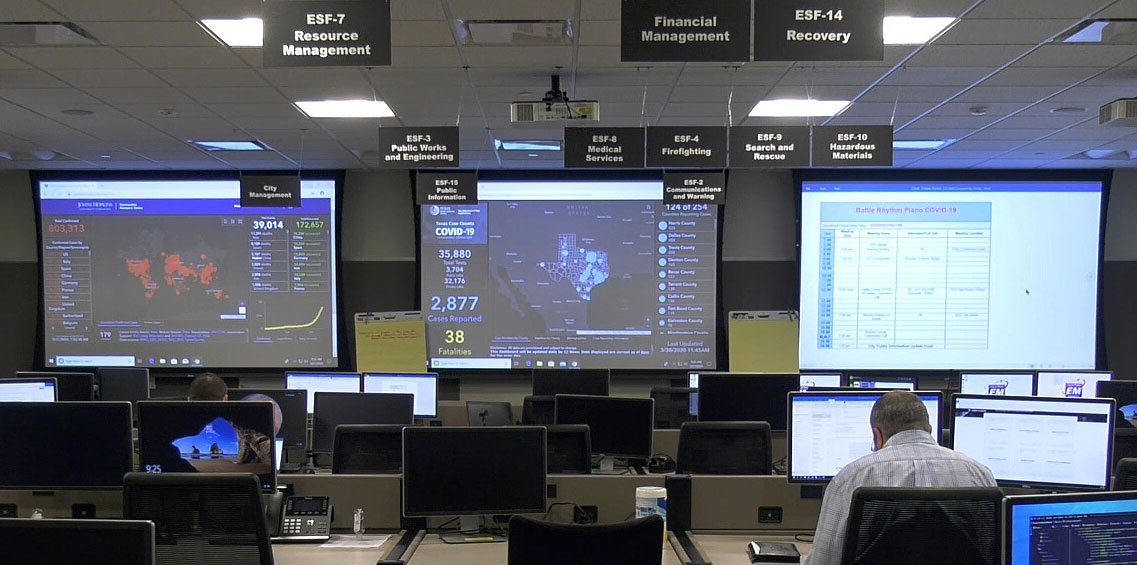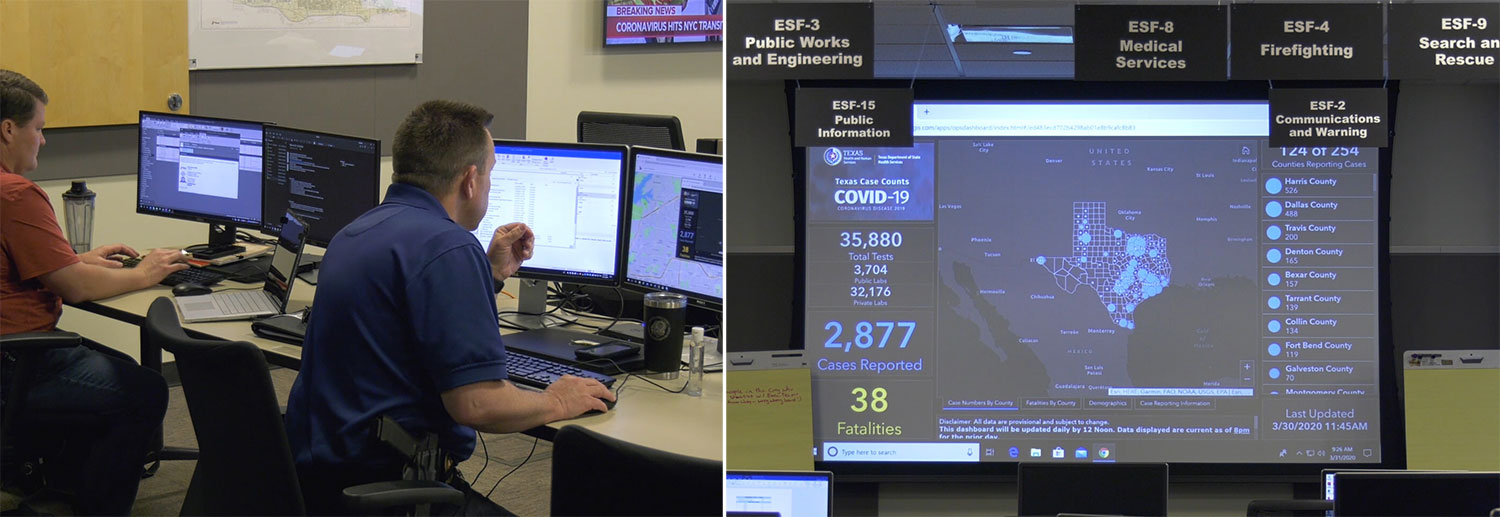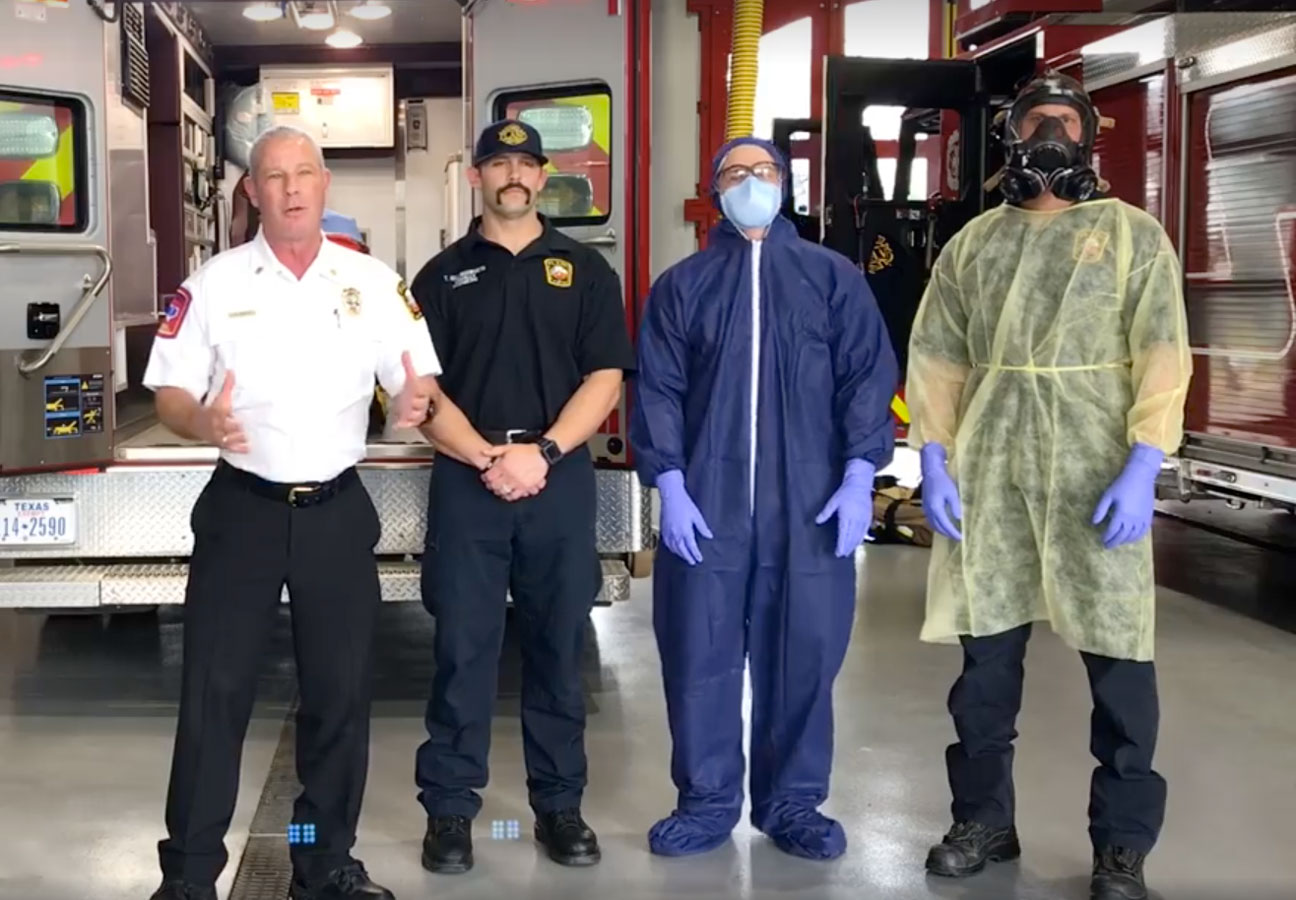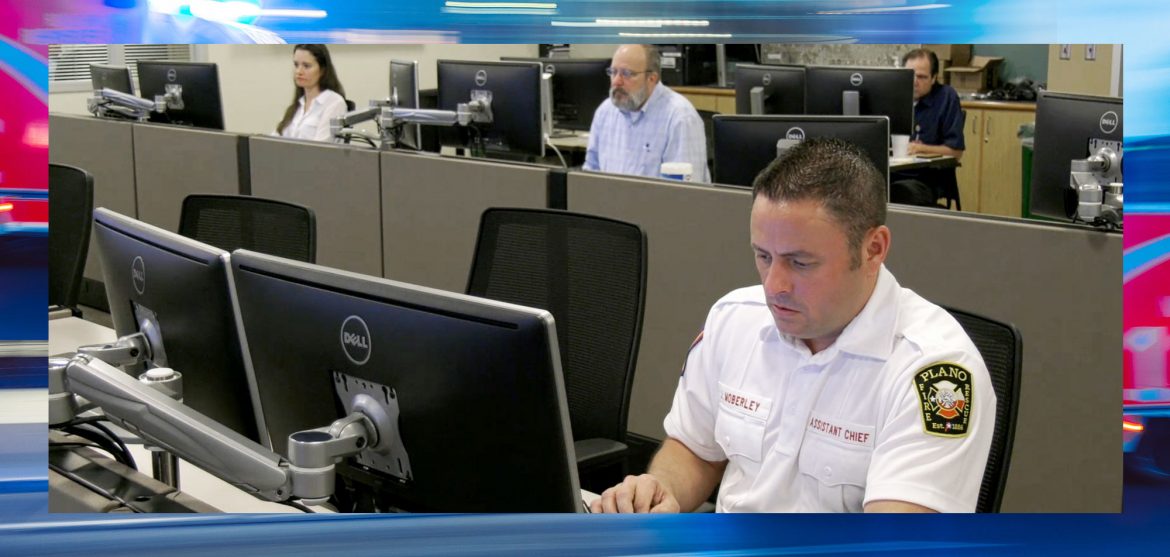A Look Inside Plano’s Emergency Operations Center and What Exactly Happens During an Emergency
Carrie Little, director of the Department of Emergency Management, admits that people have a hard time understanding what her department, which offices in the Emergency Operations Center, does for the City of Plano.
“I think a lot of people hear emergency management and think FEMA, but what we do at the local level is a bit different than what FEMA does at a federal level,” she said. “We also field a lot of calls that are not necessarily in our wheelhouse. I’ll get calls about ‘I have a bird that flew down my chimney,’ or they need assistance with an electric bill, or ‘the light pole in front of my house is leaning.’ We get all sorts of emergencies and we direct people to the correct people to call for that.”
The Department of Emergency Management ensures Plano is ready to respond to natural disasters, technological or man-made catastrophes and other emergencies. These are the people that decide when the outdoor warning sirens in Plano need to be activated. Day-to-day functions include writing plans, performing exercises, conducting trainings, discussion-based programs and hosting meetings. At the heart, it’s all about preparedness.

The usual Emergency Management staff consists of what Carrie calls a “small but mighty” team of six full-time workers and two part-time, all who office inside the Emergency Operations Center, or EOC, located on W. Parker Road. A division of Plano Fire-Rescue also co-offices at the EOC and conducts fire training. In total, there are about 15 people there at any time.
When Emergency Strikes
Emergency Management has a comprehensive plan that is the same for major disasters across the board. There isn’t a separate plan for an active shooter or tornado or even a pandemic. When a major emergency strikes, the Emergency Management department takes inventory of the city’s resources and where they need to be utilized to best address problems at that time. The department applies resources on a measured approach where they can do the most good, depending on how extensive the disaster.
“When we have something bad that happens, we can’t just start pushing resources out. Typically, if someone calls 9-1-1, we send a fire engine or an ambulance or police. When widespread disaster happens, we have to change the way we approach that. We have to look and see what resources we have available and what is the best way to put them into the field,” Carrie said.
She said as the initial response starts to ease up, the department reviews what occurred, how they did as a community and how to come back and recover. It also address if there is anything that could be improved upon or done differently next time.
Activating the Emergency Operations Center
The Emergency Operations Center is Plano’s own central command center. In times of a major emergency, the EOC can be activated to bring together key players. Having decision makers in the same room means decisions can be discussed and made much quicker than usual.

“The EOC is a space where we can bring a lot of different departments together and allow them the opportunity to have a lot of info displayed, and we also allow conference areas for several smaller, break-out meetings to occur,” Carrie said. “There is a large operations room, three very large screens with info showing what we have going on and the most pressing situation at the time.”
On March 16 the Plano City Council declared a local state of disaster for public health emergency. This activated the EOC, and an additional 25-30 people from city management, media relations, communications and community outreach, emergency management, police, fire-rescue, neighborhood services, environmental health, technology services, human resources, finance and purchasing departments moved from their usual office locations to operate out of the center.
“We were implementing some social distancing; we were sitting at least one chair apart from each other, staggering,” Carrie said. “We wanted to limit our interaction and make sure we had space between each other.”

Individual Departments Respond to COVID-19
As protocol dictates, each department played a different role when it came to the initial emergency response to COVID-19.
Shannah Hayley, director of communications and community outreach, called the move to the EOC initially chaotic, “the most chaos I’ve ever been in,” she said, as her department was getting state and national news the same time as the public, yet having to quickly assess what the information meant for Plano residents and then push localized information back out to citizens.
Environmental health and sustainability (EHS), which acts as a liaison with the county health departments and the Department of State Health Services, took the lead on implementation of the city’s pandemic plan. EHS also assists in providing feedback on any health-related internal and external guidance, and other science or research-related questions associated with the virus and provides outreach to the community.
Human resources partnered with the city manager’s office in the establishment of policies regarding the pandemic’s impact on City’s employees. “From a risk management perspective, I was responsible for partnering with [fire, police, health] departments on the formulation of exposure protocols for our employees and ensuring impacted employees received proper COVID testing,” said Shante Akafia, human resources director.
Plano Fire-Rescue’s immediate emergency response included instituting a policy to wear head-to-toe personal protective equipment (PPE) on all calls – even non-COVID-19 ones – and to limit patient contact to just one medic, unless the incident came in as critical. In addition, Fire Chief Sam Greif said the department placed a medic in the 9-1-1 call center to help determine if incidents needed to have a special COVID-19 unit respond.

Plano Police Department coordinated with emergency management staff on operational changes implemented. Chief Ed Drain said the police department tracked the status of police PPE requests and assisted in locating needed PPE, supplies and equipment. Plano Police coordinated staff needed for any special events related to the crisis, such as drive-through testing and food drives, as well as support for the homeless population.
The neighborhood services department coordinated homeless outreach and planned a homeless pandemic response with police, emergency management and fire-rescue departments. Lori Schwarz, director of neighborhood services, said her department is also the administration department for Community Development Block Grant monies, which are a significant portion of relief funding from the CARES act. The department’s property standards division organized responses regarding business closures with emergency management and environmental health.
Media Relations Director Steve Stoler sent out daily press releases and media advisories regarding any new development. This included daily case updates, testing information, changes in city operations, and programs designed to offer assistance to senior citizens, businesses and the public at large.
On April 13 the coordinated departments began to act as a virtual EOC with 8 a.m. daily briefings, with staff working remotely to follow rules of social distancing. City Manager Mark Israelson is back in his office at the municipal center and other city staff rotates working there as well.
“This is unchartered territory for everybody — across the globe. No one has dealt with a global pandemic at this magnitude and we are learning a lot,” the city manager said. “Until there is a vaccine or widespread robust testing for COVID-19 as well as the antibodies, I think there will be some temporary change in social behaviors. Once we know more, that will have a great impact. People want that confidence — to be able to go back to what they had, as far as their social norms.”
City of Plano's COVID-19 Resources >




